y = 2x + 2
y = x − 1
(-3, -4)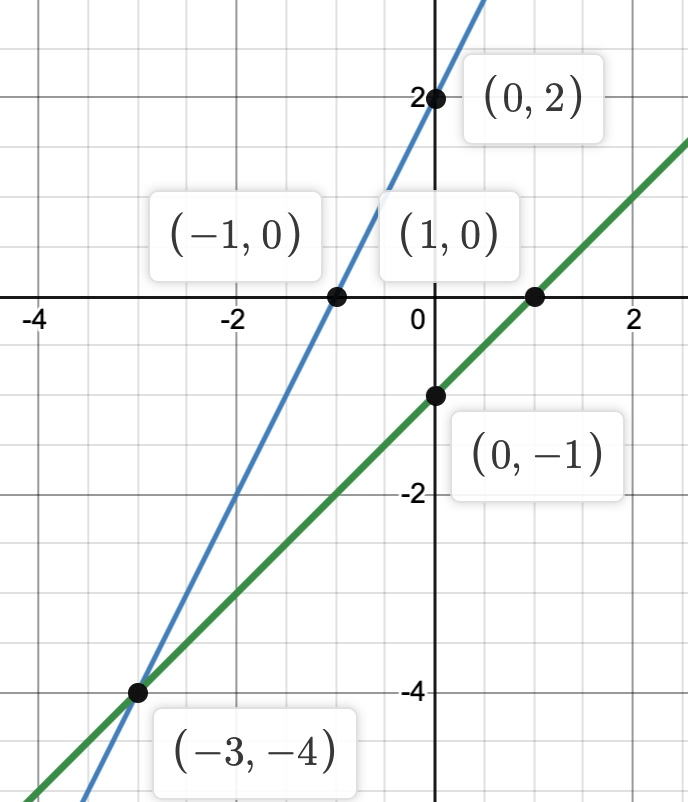
y = 2
3x + 2y = 10
(2, 2)
x + 3y = 5
2x − 3y = −8
(−1, 2)
What does a dotted line mean when graphing linear inequalities?
> or <
Consists of two or more linear equations in the same variables.
System of linear equations (linear system)
y = 2x + 4
y = 3x + 2
(2, 8)
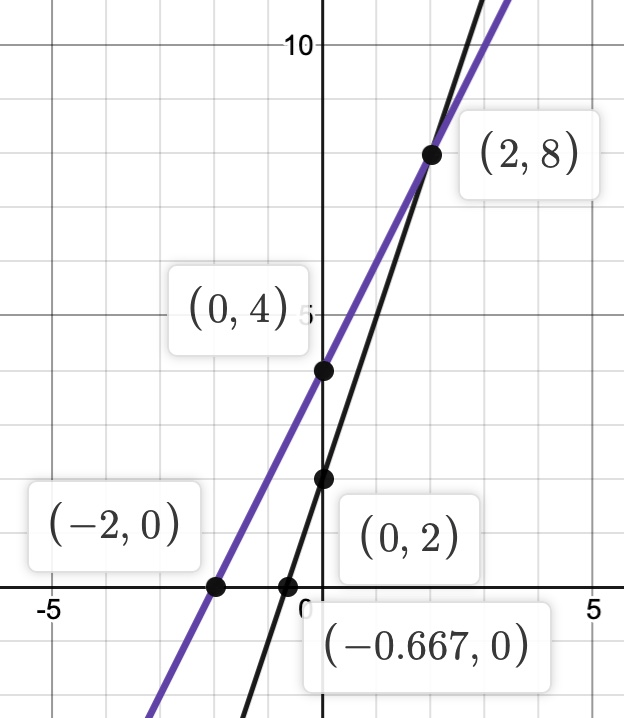
x = −3y + 2
−x + 2y = 3
(−1, 1)
−5y + 8x = −18
5y + 2x = 58
(4, 10)
How is graphing systems of inequalities different than graphing systems of equations? (2 things)
Sometimes they use dotted lines and you have to shade for inequalities.
The method of solving equations where you add or subtract equations to end up with one variable.
Elimination or Addition Method
x = 3
y = 2x + 1
(3, 7)
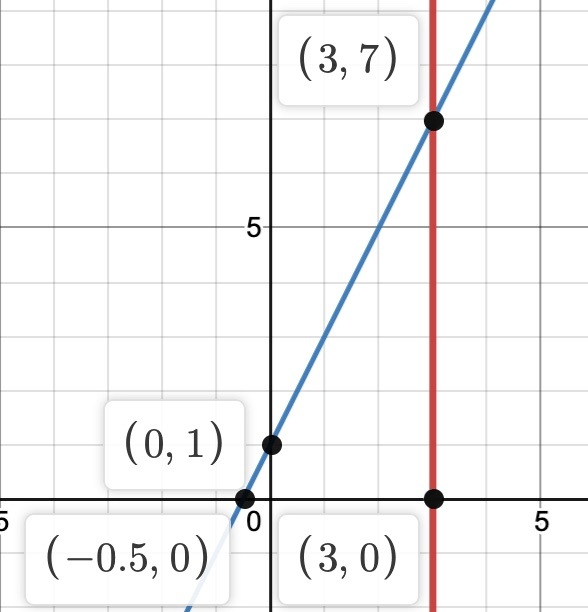
x − 2y = −10
3x = y
(2, 6)
3y − 5x = −26
−2y − 5x = −16
(4, −2)
How do you know where to shade when solving systems of inequalities?
Test a point in the inequality. If it's true, shade toward the point. If false, shade away from the point. The solution is where the shaded regions overlap.
How can you tell if a linear system has infinitely many solutions?
The equations are the same, the graphed lines lie on top of one another, or solving the system provides a true statement with no variables.
4x + 2y = 8
2x + y = 4
Every point on 2x+y=4 is a solution.
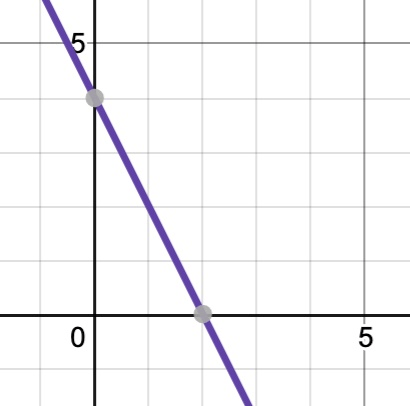
2x – 3y = –2
y = −4x + 24
(5, 4)
3x − 4y = 8
18x − 5y = 10
(0, -2)
y ≤ x − 2
y > −3x + 5
Shaded below the first line and to the right of the second line.
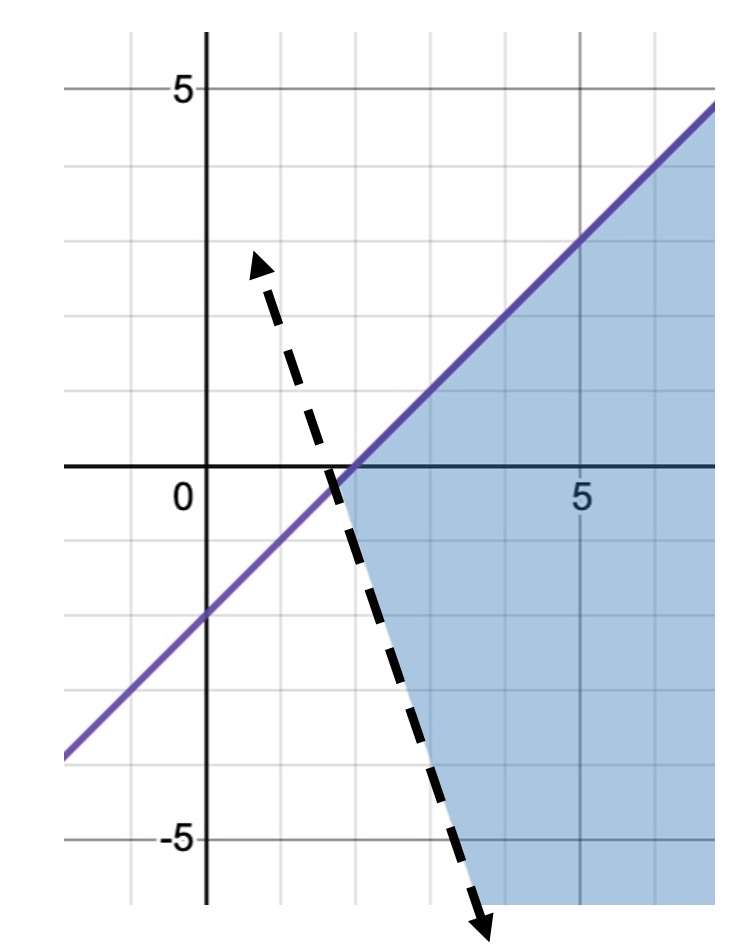
When will a system of linear inequalities have no solution?
The inequalities are parallel meaning they have the same slope but different y-intercepts and shaded away from each other. (Not in opposite directions)
y = 1/2 x + 2
y = 1/4 x + 4
(8, 6)
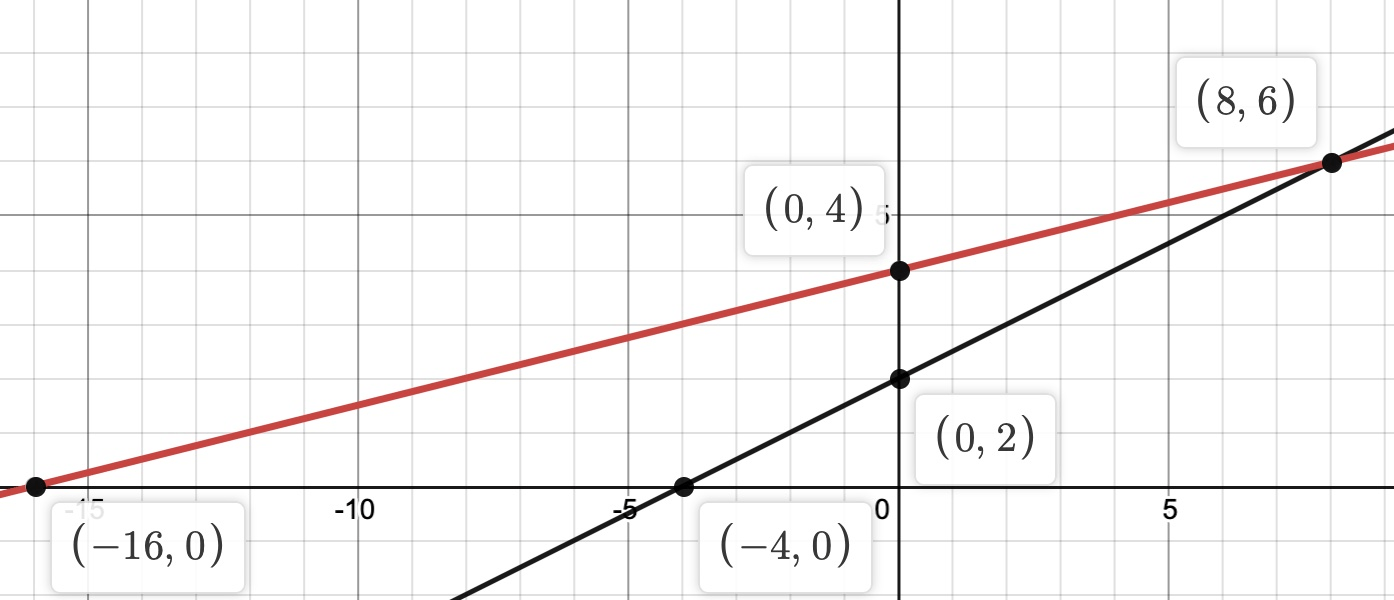
5x − 13 = y
−5x + y = 24
no solution
4x−9y = 2
12x−5y = −38
(-4, -2)
2x – 3y < 12
x + 5y < 20
Shade above the first line and below the second line.
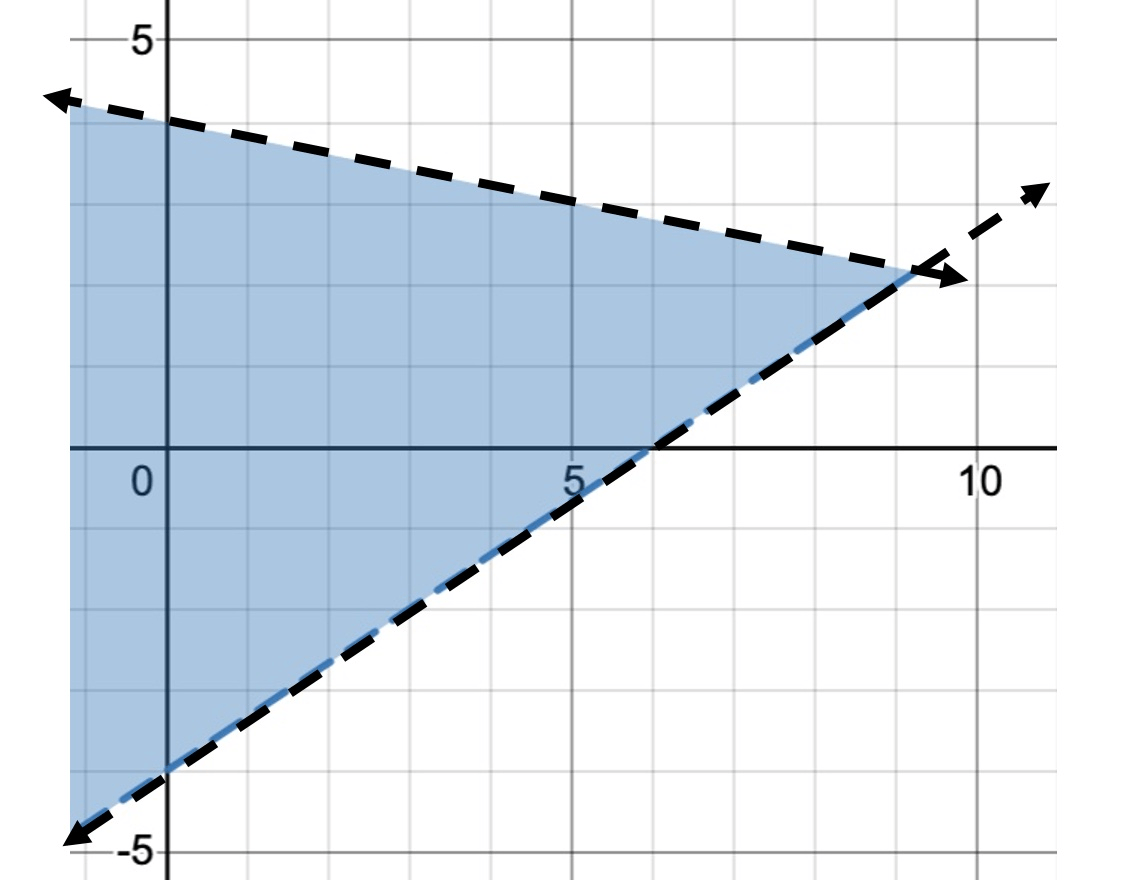
How does the graphing method for solving a system of linear equations work?
Graph the two lines. The solution is the point(s) of intersection.